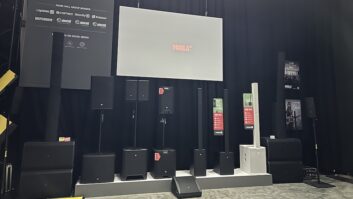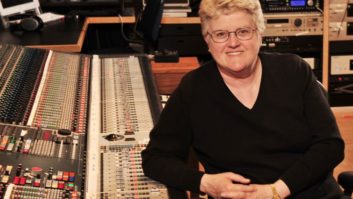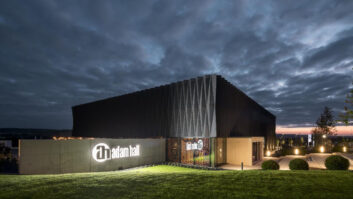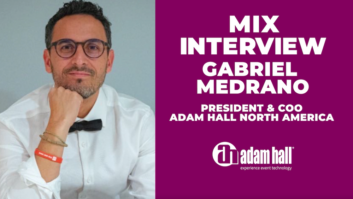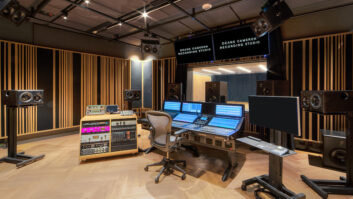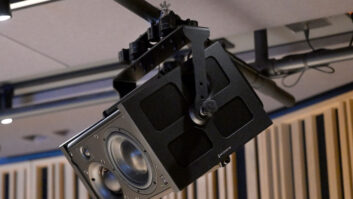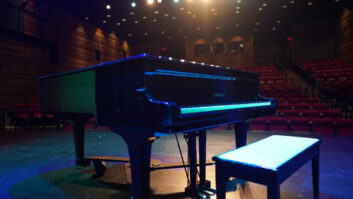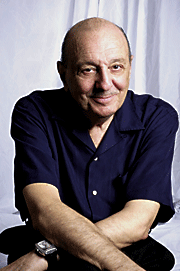

Conversing with Arif Mardin, it’s possible to be transported back to a different and maybe better time. Although his production of Norah Jones’ smash hit album Come Away With Me in 2002 reaffirmed his contemporary credentials (and earned him a Grammy for Producer of the Year, Non-Classical), Mardin’s career actually spans more than 40 years, with its genesis in an era when pop music was sophisticated, cool and classy. Add warmth and humor to those adjectives and you get a pretty good description of Mardin. Doubtless one of the most important and influential record producers, he’s garnered close to 60 Gold and Platinum albums, more than 15 Grammy nominations and 12 Grammy Awards.
His work transcends genres and includes a huge roster of artists, among them Aretha Franklin, the Average White Band, the Bee Gees, Phil Collins, Hall & Oates, Herbie Mann, Willie Nelson, Carly Simon and Barbra Streisand, to name a few. Many of the songs he’s worked on have become classics, from the Young Rascals’ 1965 Number One “Good Lovin’” to Chaka Khan’s groundbreaking “I Feel for You” and Bette Midler’s Grammy-winning Record of the Year, “Wind Beneath My Wings.” He’s also worked on numerous Broadway cast albums and television and film soundtracks.
photo: Julie Mardin
Born in Istanbul and educated there and in London, Mardin has been a New Yorker since 1962, when he went to work for Atlantic Records’ legendary founders, Nesuhi and Ahmet Ertegun. He served as studio manager, house producer and arranger, and was made VP in 1969. After retiring from Atlantic in 2001, he took on the job of VP and co-general manager of EMI/Manhattan Records. There, he produced Jones’ Blue Note/EMI debut and multi-Platinum follow-up, Feels Like Home (co-produced with Jones) and other projects such as Dianne Reeves’ A Little Moonlight, which won the 2003 Grammy for Best Jazz Vocal Album. In late 2004, he retired again, this time from his position at Manhattan Records. Since that second “retirement,” he’s continued to work on selected projects, including co-producing, with his son Joe Mardin, songs for Queen Latifah’s The Dana Owens Album and the debut release for guitar player/vocalist Raul Midñn. He is certainly a most worthy recipient of this year’s TEC Hall of Fame Award.
I’ve heard that until you saw a performance by Dizzy Gillespie and Quincy Jones, you never considered a career in music.
Not exactly. I was a jazz fan long before I was able to play. In Istanbul in the ’30s, my two sisters listened to American pop music at home: the big bands, Bing Crosby, the Andrews Sisters. When I was 10, I made my mother take me to buy a Duke Ellington record. Jazz, you see, was the American pop music of the ’30s and ’40s. It kind of died in the ’50s and gave rise to rock and R&B. But that’s how I started: I was bitten by the jazz bug. So I started to write. I took piano lessons, I wrote for friends who played instruments and, from practice, I became an arranger, writing parts and melodies. In 1955, I think it was, Dizzy Gillespie’s band came to Istanbul and we all went completely berserk to hear this amazing, dynamic music played live by a great band. I went to all the concerts. Quincy Jones was the arranger and in the trumpet section, and we became friends. Later, I sent him some of my compositions.
At the time, Voice of America funded jazz radio programs that were broadcast behind the Iron Curtain. It was propaganda, of course, but the idea was that jazz was an international language that brought people together. So, although Turkey wasn’t behind the Iron Curtain, Voice of America financed the recording of my compositions. It was, “Here’s this young man from Turkey who wrote this wonderful jazz music.” Quincy recorded it in New York with an A team of musicians. When they sent me a tape, it was played so incredibly — I couldn’t believe it was what I had written. Quincy also sent those pieces to the Berklee College of Music and I got [the first Quincy Jones Scholarship].
And then your life completely changed.
When I told my father I got a scholarship, he was so worried about my future. He wanted me, of course, to have a regular job. But I wanted to be a big band arranger.So my wife, Latife, and I — we had been married less than a year — went from a very comfortable life in Istanbul to Boston, where we lived in one room in a boarding house, sharing the bathroom with other people. But it was, in 1958, such a wonderful, idealistic life. I was learning and perfecting my craft.
Berklee formalized your education.
Before that, no one had really taught me. I just heard the arrangements [in my head]. In Istanbul, I’d been in a “rehearsal band.” That was a group of businessmen and professional people who were very enthusiastic amateur musicians. They got together once a week to play the stock arrangements for big band hits that you could buy in the marketplace. I was the piano player, and I wrote some arrangements. I’d ask the bandleader, “Can I write three trumpets with these voicings?” And he’d say, “No, that’s too high.” And I would write ridiculous lines for the saxophone player and he’d say, “I can’t play this; it doesn’t exist on the instrument!” That’s how I learned, until I went to Berklee.
I’ve read that you “shunned” rock ‘n’ roll until you had your first hit with the Young Rascals.
[Laughs] Yes, jazz went to the back burner when that happened. But, no, I didn’t shun rock ‘n’ roll. When I joined Atlantic Records, I had, in my knowledge, all those sophisticated jazz chords, those avant-garde voicings — things like that. And when I was told to write horn arrangements for someone like Wilson Pickett, I knew I couldn’t use them. I had to go to the basics and use certain lines and harmonies that were simpler. It wasn’t so much that I was putting rock ‘n’ roll down, I had to learn another language!
Aretha Franklin, Donny Hathaway and Mardin in session
photo: Courtesy Arif Mardin
It was at Atlantic where you hooked up with Tom Dowd.
Tom was my mentor and my contact with technology. He could mix a record on the spot into a perfect mono mix. He was also a genius with the 8-track.
What are some of the things you learned from him?
Tom had an aesthetic about mixing, especially in the R&B tradition. He definitely had a mix style: proportions, balance and how the bass and kick drum would almost dominate the mix. The bass, kick drum and vocal would hit zero on the VU meter. Those three elements would be the same and the others would fall in musically as taste would require.
He wouldn’t mix a beautiful pop string date like that, of course. But for R&B, it was a certain bottom-heavy mix that percolated with the kick and bass and backbeat. The vocals were a little inside, but he would never lose a lyric.
Also, Tom was a can-do person and amazing with technology. We were working one day on an Aretha Franklin album cut. Somehow, we pressed the wrong button and erased eight bars. Aretha was in the building, so we asked her, “Can you redo these eight bars?” She said, “I already did it!” And she went home. What she meant was it was on the previous take. But there was no click track and the song had been played by humans! Every bar had a wonderful, elastic, natural flow to it. The vocal [on the other take] definitely did not match the tempo of the track that we’d erased. So Tommy, who’d recorded on 8-track, re-recorded the vocal to a mono tape. He worked on the syllables, edited the pauses and, finally, he flew it into those eight bars so it fit like a glove. Today, we have time compression and sampling; he did it with a razor blade and his ears. I watched him, and I thought, “There is no stopping this man.”
Eventually, you mixed a lot of records yourself.
I learned from Tom and from mixing all sorts of different things, like live recordings. We sometimes had to cheat a little bit: Say there wasn’t applause and we had to take it from somewhere. We did what we do today, but by lining up tape recorders and using loops — things like that. So I learned what technology could do. Don’t ask me what model number a certain device is, but I know what can be done! I tell my engineer, “Hey, that gray box or the blue box? Let’s compress this, let’s do that.” I know exactly what has to be done, but I don’t attempt to memorize all model names.
What was it like to be a house producer?
Here’s how it worked. Jerry Wexler was one of the founders of Atlantic. At first, Tommy and I were his helpers. Then, Jerry made us co-producers and we became a team, like on the famous Dusty [Springfield] in Memphis album. Jerry was senior producer, selecting the songs. One of my assignments was arranging with the musicians, which was fabulous because we had wonderful musicians. The guitar player would play something great and that would become a hook. It was, “Please play it again eight bars later.” Working with them was like supervising the making of the soup.
I experienced that again in 2001 and 2003 with Norah Jones, where four or five wonderful musicians played grooves and we got the songs together. It was a great feel, like going back to the ’60s and ’70s.
Dizzy Gillespie, who inspired Mardin back in the ’50s in Istanbul, with Mardin and Chaka Khan
photo: Courtesy Arif Mardin
There was more of that element then, of everyone having to perform their best quickly.
Exactly. The clock was ticking and we had to do it all in a very efficient way. In the big cities — L.A., New York City, Miami — you had an A team of extremely capable musicians. At Atlantic, you’re talking about people like Bernard Purdie, Cornell Dupree on guitar, Chuck Rainey and Gerald Jemott on bass. We had an A team of three or four musicians for every instrument.
How do you think that compares to recording today?
Well, it’s very interesting today. A guitar player in New Jersey can send by computer his part to the producer’s home studio. I don’t think live music is dead; it’s just being recorded a different way.
You have songwriter/producers who are extremely powerful because they make sure that their song is represented properly and the lyrics are heard. You have wonderful engineer/producers like Hugh Padgham and Tommy, although Tommy was also very musical; he played bass, although he never boasted about it. And you also have musical arranger/producers like me. But my kind of producing, with musicians in the studio, I don’t think exists much anymore.
Can you describe your style of working with artists?
At Berklee, I had a wonderful teacher, Herb Pomeroy, who used to joke and kid around in rehearsal with the big band musicians. Then he would get 200 percent out of them. So I learned to create a wonderful atmosphere, seemingly very relaxed, but actually, you kept things moving.
In a way, you are also performing.
Yes, it’s a little like being an impresario, acting in the middle of it all.
What was a typical session with Aretha like back then?
First, Jerry Wexler and Aretha would agree on a song. Aretha played the piano and she would always come in totally prepared. The musicians would be there, and she’d start playing the song. Tommy and Wexler would be in the control room. I’d be in the studio with manuscript paper, and we’d start looking at her hands and what kind of voicings she was using or what kind of bass line that the bass player could benefit from imitating or copying. While she played the groove, the musicians would look and make notes: “Oh, we have to use a little stop here; I can double her in bar 5.” Things like that.
Then they would play and she would sing live with some isolation between the piano and the voice mic. It wasn’t enough [isolation], but still, she would sing live because that’s what the song was about.
Arif with son Joe at Euphoria rehearsal studios, 2003, getting ready for Melissa Erico shows
photo: Courtesy Arif Mardin
Then we’d get directions from the control room: The intro should be four bars instead of eight, et cetera. The suggestions would come flying and I’d be trying to write down the chord changes and conducting — say if there was a ritard at the end or something like that.
After the take was done, Aretha would maybe do another vocal or two. Even though she’s the “natural woman,” she doesn’t mind technology. She’d say, “Use my first verse from take 2.” After all, she’s a genius and she sang it!
You recently did a song with Aretha in quite a different way.
Yes. We were working on “House Is Not a Home” for a Luther Vandross tribute record. She was in Detroit and I was in a New York studio. We did it on EDnet and it was wonderful. I also did that a few years ago with Barbra Streisand listening in her California home to our mixes at Right Track in New York. She’d say, “I’d like to sing the third line in yesterday’s mix again.” We had instant recall on a digital board and — boom — we did it. It was fantastic.
Do you think you have a particular affinity for working with women artists?
[Laughs] That’s what my wife asks! Maybe I put them at ease because I’m not a male chauvinist. There are some producers who will say, “What does that girl know? C’mon, do as I tell you!” But you can’t do that with these wonderful singers. You’ll get killed!
How did you come to work with Norah?
That’s my retirement joke. After I had retired from Atlantic in 2001, Bruce Lundvall called me and said, “We have this wonderful singer. She made an album, but I think they went away from the original feeling of the piano-oriented demos,” which he loved. What they’d recorded was more guitar-oriented and he wanted the original feel. I agreed. I loved the way she was singing and playing the piano, and the songs were wonderful. So I started to work with Norah.
She seems to be a strong-minded person. Did you ever argue with her about things?
My job is to alert the artist if I think it can be better or if the project is going in the wrong direction. With Norah, the project [when we started working] was not going in the wrong direction. Of course, I had ideas and I’ve been known to add string sections and horn sections, vocal groups and things like that to my productions. But working with Norah, it was an exercise in restraint.
I would say, “Can we add some strings to this song?” And she would say, “Only one violin, Arif.” It was a give and take. When there was something that I thought wasn’t right, I would say so. She would either agree or we would come to terms.
With Norah, at the beginning, we had a meeting and I told her, “You are the boss; I work for you. I bring in ideas; we talk about them. That’s all.” When our journey started, we had this understanding. I’m not a producer who puts his stamp on the sound. She doesn’t want synthesizers, but an organ would be fine. She doesn’t want a big string section, but a duo or string quartet — maybe.
How do you express your opinion without being threatening?
Here’s an example. On “Come Away With Me,” the lyrics suggest that she is going away on a bus, her face pressed to the window and she is sad. So I said, “You know, I can feel this, almost like in a film. There’s an Arizona desert here, with the horizon a straight line and telephone poles along a lonely road. How about this organ part that has common notes going through all the chords in the chorus? When we hold this note, it will be like picturing the lonely horizon.”
How could she say “no” to that? So the trick is in how you present an idea.
Well, it wasn’t a do-or-die situation; it was an idea. The song would still have been good without it. But she liked it. And I do love to play the film director. Maybe I should have been one!
Do you often explain things visually?
I love to do that. I learned so much about that from Bette Midler. She’s a wonderful actress and a wonderful singer. When she did a song, she would explore at least three different voices or characters. “Should I be this person? Am I happy here? Am I wistful?” Then she’d decide on the character and sing the song like that person. It’s a wonderful dramatic exercise. The same way I went to Aretha’s school of gospel and soul, I went to visual drama school with Bette. So now I often talk about horizons and things like that. I probably drive people crazy!
It has been your job to create hits.
Yes, and I need to fulfill that job. A producer is not a “yes” man. That’s very important. But a hit is made when it touches people somehow. In the case of Norah’s first album, when we were done, we knew it was musically wonderful. But we wondered how we could compete with the teen-oriented radio music that was dominating. And we decided, “Well, this is wonderful music. Maybe the second record will be more commercial.” But we were wrong. It was picked up by radio, then the TV morning shows, then the big TV shows. All of a sudden, it became an avalanche because it appealed to people.
With “Wind Beneath My Wings,” we got Grammys. But for me, the most important thing was we received a lot of letters. “My mother has cancer, she heard this song and it gave her solace.” “My wife and I are getting divorced; we heard the song and decided to give it another try.” Letters like that; it was fantastic. It touched people.
Are you optimistic about the future of pop music? Do you think if great music is put out there for the public, they will buy it?
Yes, because a good song is always a good song, and there are great singers and they are listened to. I do wish we had more real song interpreters. I heard Beyoncé at two Grammy Awards telecasts. She sang beautifully! Here’s a woman with a great voice, great interpretive skills. Artists like her are making hits, so I’m in no position to advise. But with the pop framework she’s in, the songs aren’t that challenging.
But I don’t want to talk about “today’s” music. To me, what’s important is to give yourself to a project and to try to do your best. You have to give 200 percent of yourself to get 200 percent from the artist.
I know you’d like to tell us a little about your latest release, Raul Midón’s State of Mind, which you co-produced with your son Joe.
We co-produced, but Joe was actually the architect on this project, shaping sounds and choosing songs. We added very little: a bass when needed, a guest soloist like Stevie Wonder.
Raul was signed to Manhattan Records on the sheer strength of his artistry. It’s a bit of a parallel to Norah. Bruce Lundvall signed her, saying, “This is great. I don’t care what anyone says, I’m going to sign her,” because of her musical merit.
The same thing happened when we saw Raul play live. We were mesmerized. Then he came to our office and played a little bit. I told him to stop and left the room. He thought I didn’t like it, but I was out getting all the department heads. And we signed him. We weren’t thinking about a segment of pop radio; we didn’t care. So, we will see. The album is getting incredible reviews and national TV exposure; hopefully, we will be proven right!

Arif Mardin worked with legendary engineer Tom Dowd on some of Aretha Franklin‘s biggest hits, as well as Dusty Springfield and many others. Read about Dowd’s landmark career, including his work with Mardin, in our two-part series written by Blair Jackson, featured in the October and November 1999 issues of Mix.
Arif Mardin with Donny Hathaway

